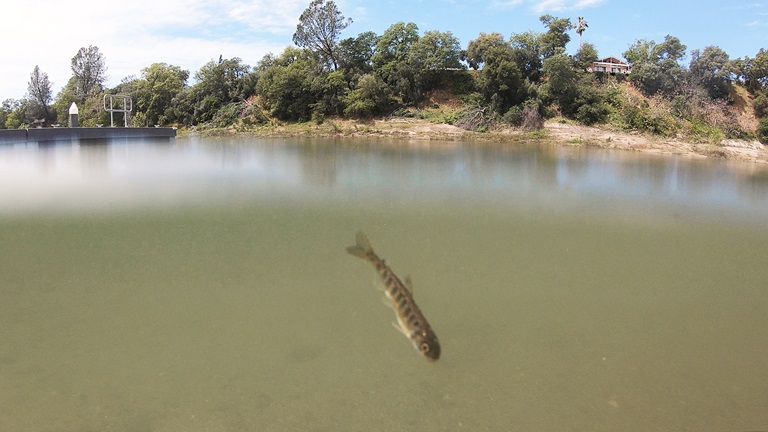Release of Steelhead Trout Moves Forward Amid COVID-19
Close-up of Steelhead fry. DWR/2020
Hundreds of juvenile Steelhead trout were released into the Feather River this spring, the culmination of a popular educational program that was interrupted by the COVID-19 health emergency.
The Classroom Aquarium Education Program (CAEP) based out of the Feather River Fish Hatchery released close to 200 juvenile Steelhead this spring. The spring release of Steelhead trout is usually a popular educational outreach tool used between the Department of Water Resources (DWR) and the California Department of Fish and Wildlife (CDFW) and local schools and non-profits in the area.
“Normally, classes and other community groups setup field trips to release fry (juvenile fish) each spring and fall,” said Jada-Simone White, a DWR contracted biologist with the Pacific States Marine Fisheries Commission. “This year, classes closed in March and we had to collect the fry and release them into the lower Feather River ourselves.”
The Feather River Fish Hatchery in Oroville was built by DWR in the late 1960s to compensate for salmon and trout spawning grounds lost due to the construction of the Oroville Dam. The CAEP has been working to educate youth on the importance of protecting habitats for native fish species and providing hands-on classroom educational experiences through the raising and hatching of Chinook salmon and Steelhead trout since the 1980s.
“It’s important that we connect the work we do with the interests of the local community,” said Senior DWR Environmental Scientist and Feather River Program Section Chief, Jason Kindopp. “Getting fish eggs into the hands of local school kids is a great way to begin the dialogue on the tens of thousands of fish that spawn naturally in the Feather River each year, along with what role hatcheries play and why they’re important.”
Usually classes and groups that participate in the spring Steelhead program receive tanks of close to 30 to 35 fish eggs in February and can start tracking their development and survival right away. The climax of the program happens in late March or early April, when participants bring their fry to the lower Feather River for release.
“The release field trip is usually the highlight of the program and hundreds of students participate,” said White. “Due to this year’s COVID-19 emergency we had to arrange to pick up and rear the eggs to the fry stage, and then filmed the release for students to view at a later date.”
At this point it’s too early to tell if or how this fall’s Chinook salmon classroom program will be affected by the COVID-19 emergency, but White says she’s hopeful both programs will be running and educating local youth as soon as they possibly can.
"Hands-on, minds-on,” she said. “Steelhead trout and Spring-run Chinook salmon are listed as threatened by state and federal authorities and each offers unique challenges to population management due to their long-lived, complex life cycles. Experiences like the Feather River CAEP help foster long-term understanding of those cycles.”
For more information on the Feather River CAEP program and how to participate in the Spring and Fall fish fry training program, visit the CAEP webpage.
